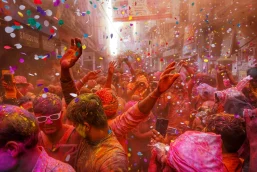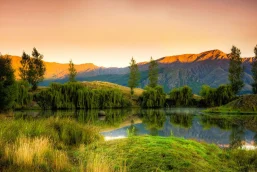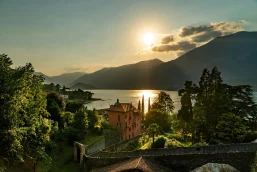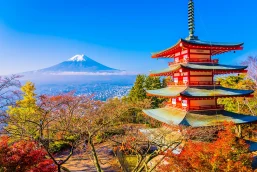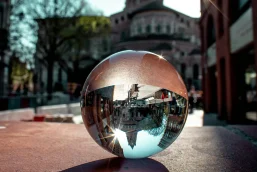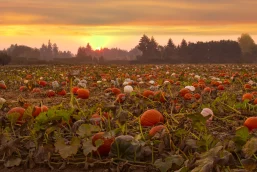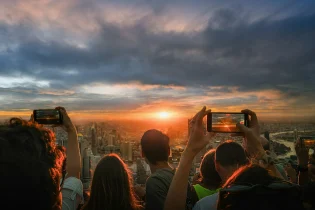Spring is in the air! As winter’s chill gives way to warmer days, people across the globe prepare to celebrate one of nature’s most perfect balancing acts: the spring equinox. This magical moment marks not just a change in seasons, but has inspired cultural celebrations for thousands of years. Ready to discover how different cultures welcome spring? Let’s explore this fascinating celestial event and the diverse traditions it has inspired.
What Exactly Is the Spring Equinox?
This astronomical phenomenon, which our ancestors noticed thousands of years ago, is described by modern science approximately like this:
The spring equinox (also called the vernal equinox) occurs when the sun crosses the celestial equator, creating a near-perfect balance between day and night across the globe. In the Northern Hemisphere, this happens around March 20-21 each year, while the Southern Hemisphere experiences it around September 22-23.
During the equinox, daylight and darkness each claim about 12 hours, creating a brief moment of perfect equilibrium before the days grow longer in the respective hemisphere experiencing spring.
Well, and to finish this scientific part, let’s add that the word “equinox” actually comes from Latin, meaning “equal night” — a fitting name for this balanced celestial event.
Ancient Monuments and Modern Marvels: Where to Experience the Equinox
Chichen Itza, Mexico
Perhaps the most famous equinox celebration happens at the ancient Mayan pyramid of El Castillo in Chichen Itza. As the sun sets on the equinox, shadows create the illusion of a serpent slithering down the pyramid’s steps — the famous “descent of Kukulkan.” Thousands of visitors gather to witness this remarkable archeoastronomical phenomenon that demonstrates the Mayans’ incredible understanding of astronomy.
Stonehenge, England

Sun over legendary Stonehenge. Photo by Howard Walsh (Pixabay).
This prehistoric monument becomes the center of modern pagan and druid celebrations during the spring equinox. Visitors are granted special access to the stone circle to watch the sunrise. The alignment of these ancient stones with celestial events continues to fascinate researchers and spiritual seekers alike.
Persepolis, Iran
The spring equinox coincides with Nowruz, the Persian New Year, a celebration with roots going back over 3,000 years. The ancient city of Persepolis was specifically designed to align with the equinoxes. Today, Iranians and many Central Asian countries celebrate with deep cleaning (the original “spring cleaning”), setting a “Haft-Sin” table with seven symbolic items, and gathering for festive meals.
Global Celebrations: How Different Cultures Welcome Spring
Japan: Cherry Blossom Festivals

Women in traditional Japanese clothing with cherry blossoms in their hair. AI-generated image by Adam Zubek-Nizol (Vecteezy).
While not directly tied to the equinox date, Japan’s famous Hanami (cherry blossom viewing) festivals occur in the weeks following the spring equinox. These celebrations honor the transient beauty of the sakura blooms and represent renewal and the fleeting nature of life.
India: Holi Festival
The vibrant “Festival of Colors” typically falls near the spring equinox. As we have written earlier, participants of the Holi festival throw colored powders and water at each other in a joyous celebration that signifies the triumph of good over evil and welcomes the spring season with its riot of colors.
Nordic Countries: Ostara
In Scandinavian traditions, the goddess Ostara (from whom we get the word “Easter”) represents the dawn and spring’s renewal. Modern celebrations include feasting, lighting bonfires, and decorating with symbols of fertility and rebirth like eggs and rabbits.
Why Do We Celebrate the Equinox?
Interestingly, across various cultures, spring equinox celebrations share common themes:
- Renewal and rebirth. As nature awakens after winter, many traditions focus on new beginnings. This theme is evident in festivals like Japan’s Hanami, where cherry blossoms symbolize the fleeting nature of life, and India’s Holi, which celebrates the arrival of spring with vibrant colors.
- Balance and harmony. The equal day and night symbolize finding equilibrium in life. This balance is reflected in the astronomical alignment of ancient sites like Stonehenge, where visitors gather to witness the sunrise on the equinox.
- Agricultural significance. Many farming communities used the equinox to mark planting seasons. For example, in ancient Persia (modern Iran), the spring equinox marked the beginning of the New Year (Nowruz), which included agricultural rituals to ensure a successful harvest.
- Spiritual connections. The triumph of light over darkness holds powerful symbolism in many belief systems. This theme is central to festivals like Holi, where colors represent the victory of good over evil.
- Community and Unity. Many equinox celebrations bring communities together, fostering unity and shared cultural heritage. For instance, the Ostara celebrations in Nordic countries involve communal feasting and bonfires.
- Cultural Heritage. The equinox often serves as a time to honor cultural traditions and historical roots, such as the Mayan celebrations at Chichen Itza, which highlight their astronomical achievements.
Planning Your Equinox Travel Adventure: A Celestial Appointment That Never Cancels
The beautiful balance of ancient astronomy, cultural traditions, and natural phenomena makes the spring equinox one of the most fascinating times to explore how humans across the globe connect with the rhythms of our planet.
For travelers seeking unique cultural experiences, planning a trip around the spring equinox offers a window into ancient traditions that continue to thrive in the modern world. Whether you’re watching the serpent descend at Chichen Itza, joining the colorful chaos of Holi in India, or witnessing the sunrise at Stonehenge, experiencing these celebrations firsthand creates memories that last far beyond the changing seasons.
Well, and to not spoil these memories, it makes sense to book tickets and accommodations well in advance, as many of these destinations see their peak visitor numbers during equinox celebrations. And if you didn’t manage to travel to see the spring equinox this year, don’t worry: the laws of celestial mechanics guarantee you this unique astronomical show next year and in all subsequent years for many centuries to come 🙂




